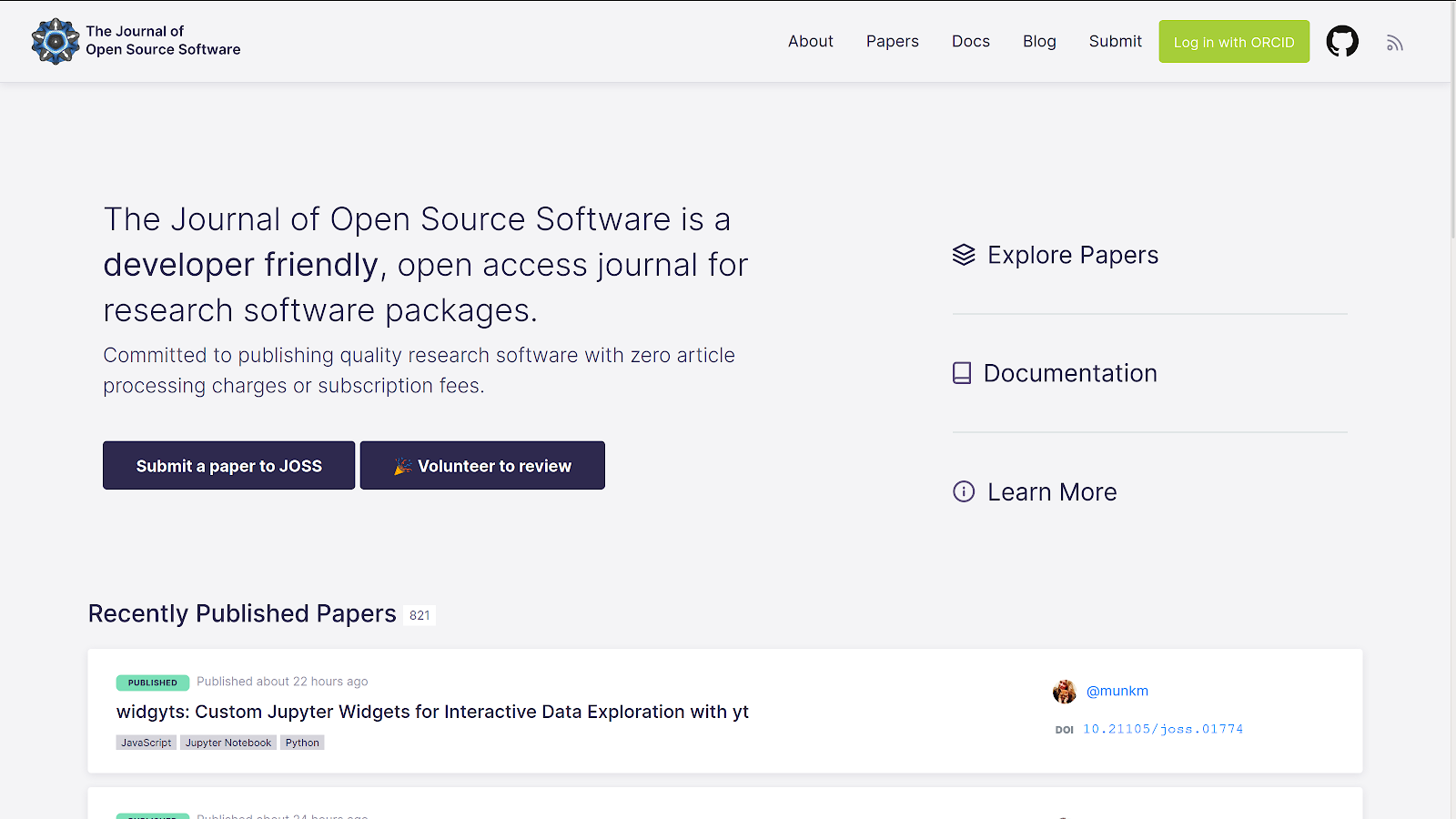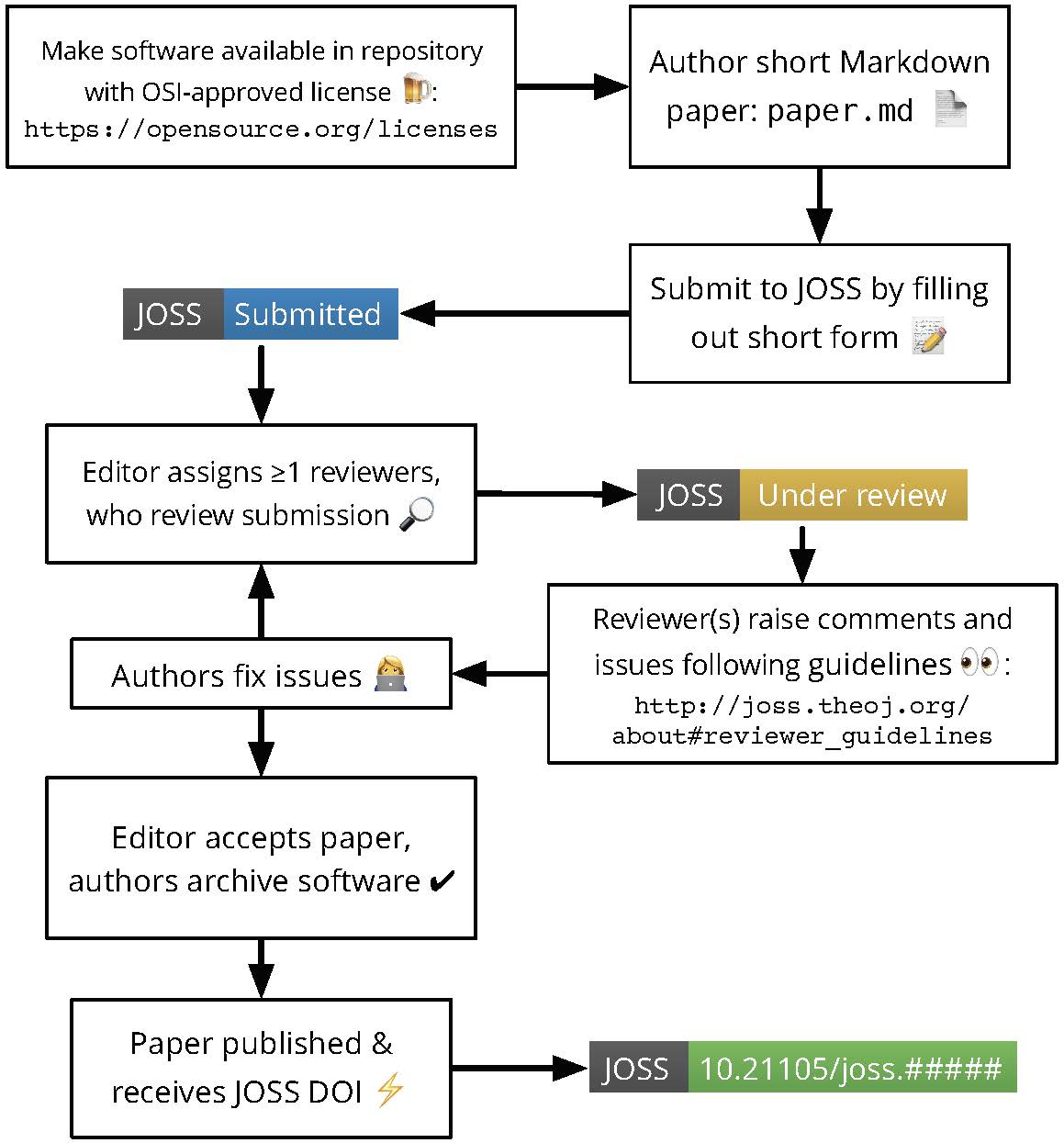It’s hard to imagine doing research in 2020 without relying on software. Almost every task, from data acquisition and data processing to modeling and visualization, involves a software component. The rise of open-source software in science has empowered generations of researchers to build upon the work of others like never before. But the credit and incentive systems of academia have failed to keep up. Researchers investing large portions of their time building and maintaining crucial open-source software often find themselves lagging behind their peers in terms of academic currency: papers and citations.
The Journal of Open Source Software (JOSS; https://joss.theoj.org) was created to solve this problem. It’s a developer-friendly journal that publishes papers about research software, providing credit to developers in the form of a citable paper. JOSS is far from your average journal:
A JOSS paper does not duplicate (or substitute for) the software documentation. In fact, preparing the paper should take no more than a few hours if you’ve already invested in writing documentation.
Reviewers of JOSS submissions review the source code and development process too, not just the paper.
The JOSS review has the goal of collaboratively and openly improving the quality of the submission to the point where the submission is accepted, not merely passing judgment. Reviewers and editors often submit issues and pull requests to the software repository and work with authors so that the submission improves until it meets the required criteria.
The review takes place on a platform familiar to many software developers: GitHub (with the help of our trusty bot Whedon). The whole process should be familiar to anyone who has commented on a GitHub issue.
To get a sense of the JOSS review process, here are two examples of Geodynamics software reviews:
“Stripy: A Python module for (constrained) triangulation in Cartesian coordinates and on a sphere.” Review (published in 2019): https://github.com/openjournals/joss-reviews/issues/1410
“Underworld2: Python Geodynamics Modelling for Desktop, HPC and Cloud.” Review (accepted): https://github.com/openjournals/joss-reviews/issues/1797
If you’re interested in submitting your software to JOSS:
Check that your software is within the scope of the journal and meets our eligibility requirements (if in doubt, feel free to ask the editorial team).
Write a short paper providing context, statement of need, references, etc. (usually less than 1,000 words).
Fill out the JOSS submission form.
Find out more about the submission requirements, review process, and more in our documentation site https://joss.readthedocs.io/en/latest/submitting.html.
As of this writing, JOSS has published more than 820 papers (since its launch in May 2016), and it has 115 submissions active in the review pipeline. Demand has increased quickly, requiring our Editorial Board to expand, with 20 new members joining in the last year. This incredible growth in submissions, and the willingness of our volunteer editors and reviewers to participate, show that JOSS meets a pressing need of the modern researcher. In addition, the tooling for automating and managing the editorial workflow is fully open source. Other journals have sprung under the same model (The Journal of Open Source Education), and likely more will in the future.

Figure 1. The home page of JOSS. Authors can log in with an ORCID instead of creating a new account. The CIG community is encouraged to volunteer to review!

Figure 2. The lightweight publication pipeline for JOSS. From https://doi.org/10.6084/m9.figshare.5147773.v1 under CC-BY.